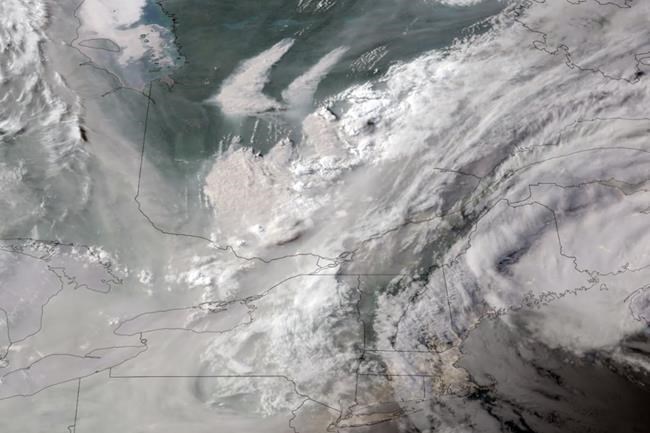Federal Emergency Preparedness Minister Bill Blair has said images of wildfires burning across Canada are some of the most severe ever witnessed in the country and the forecast for the next few months indicates the potential for continued higher-than-normal fire activity.
The 91ԭ�� Interagency Forest Fire Centre says there are 415 fires currently burning. About 2,285 fires have burned 37,000 square kilometres so far this year
Here's a look at the current wildfire situation as of Tuesday afternoon:
NOVA SCOTIA
There are five active wildfires. The province has recorded 212 so far this year, about double the number in an average year. About 267 square kilometres have burned.
A fire that broke out at the end of May in suburban Halifax destroyed about 200 structures, including 151 homes. About 16,500 people were initially forced from their homes and the city says about 4,100 residents remain displaced.
A fire in Shelburne County in southwestern Nova Scotia, considered the largest in the province's history at around 250 square kilometres, is still out of control. The province says 150 structures had been lost, including an estimated 60 homes.
QUEBEC
The province has reported more than 150 wildfires, including at least 110 that are out of control. This year so far, fires have burned more than 1,730 square kilometres.
Premier François Legault says the Abitibi-Témiscamingue region in northwestern Quebec is an area of particular concern, with the communities of Normétal and Lebel-sur-Quévillon under threat.
Fires have forced about 10,000 people from their homes, mostly in the northwestern Atibibi region and eastern Cote-Nord region.
ALBERTA
There are 64 wildfires burning across the province, 18 of which are out of control. A total of 590 wildfires have burned about 12,016 square kilometres this year.
Officials recently lifted a provincewide state of emergency, brought in May 6 to expedite co-ordination of firefighting resources and support for evacuees. At one point in early May, about 29,000 were out of their homes in various communities.
About 4,300 remain evacuated. Evacuation orders are in place for Fort Chipewyan, Dene Tha' First Nation, Fox Lake, Chipewyan Lake and surrounding areas, and part of Sturgeon Lake Cree Nation. Garden River is under an evacuation alert.
SASKATCHEWAN
There are 25 wildfires actively burning, four of which are not contained.
The province has recorded 201 fires so far this year, compared to a five-year average of 135.
Many residents in northern Saskatchewan remain out of their homes. Community members identified as high-risk were evacuated last week from La Loche and Clearwater River Dene Nation.
Indigenous Services Canada says about 400 evacuees are from First Nations.
NORTHWEST TERRITORIES
There are 11 wildfires actively burning across the territory. A total of 21 wildfires have burned nearly 3,833 square kilometres this year.
K'at'lodeeche First Nation residents remain displaced by a fire that has damaged several buildings on the reserve, including the band office. The fire is classified as being held and was last mapped at 32 square kilometres.
The nearby town of Hay River, where residents were allowed to return on May 25 following a nearly two-week evacuation order, remains under a precautionary evacuation alert.
An out-of-control wildfire measured at more than 2,490 square kilometres is burning 10 kilometres from Sambaa K'e near the Alberta boundary. The community was evacuated last week. One home was destroyed in an ignition operation.
BRITISH COLUMBIA
There are 78 active wildfires, 24 of which are out of control. A total of 382 fires have burned more than 4,563 square kilometres this year.
B.C. Wildfire Service says an out-of-control fire burning north of Fort St. John, estimated at more 2,400 square kilometres, is the second largest in the province's history.
This report by The 91ԭ�� Press was first published June 6, 2023.
— By Emily Blake in Yellowknife
___
This story was produced with the financial assistance of the Meta and 91ԭ�� Press News Fellowship.
The 91ԭ�� Press



